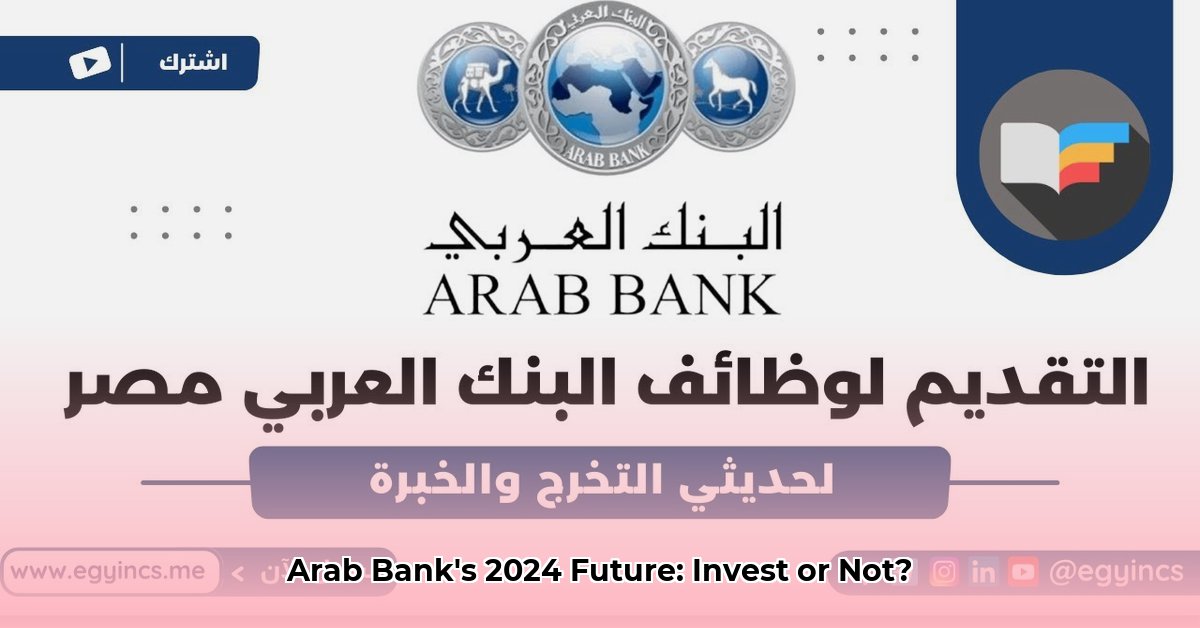
Arab Bank PLC (ARBK) currently trades at 4.80 Jordanian Dinars (JOD). Determining the investment suitability of ARBK at this price requires a comprehensive analysis, which is presently hampered by a lack of readily available data. This article outlines the challenges faced in evaluating ARBK and proposes a structured approach for prospective investors.
Understanding the Current Valuation
The current JOD 4.80 share price provides a limited starting point for valuation. A robust assessment necessitates further investigation into several key financial metrics. Critical information, such as the Price-to-Earnings (P/E) ratio (a measure of the price paid for each dollar of earnings), Return on Equity (ROE) (a measure of profitability relative to shareholder equity), and dividend yield (the annual dividend per share relative to the share price), is currently lacking. This absence significantly restricts any definitive conclusions regarding ARBK's current valuation.
Missing Data: Constraints on Analysis
The scarcity of publicly accessible financial data poses a significant obstacle to comprehensive analysis. Without readily available information on key performance indicators (KPIs) such as P/E ratio, ROE, and dividend yield, any assessment of ARBK's investment attractiveness remains inherently speculative. This data deficiency significantly limits the ability to conduct a thorough fundamental analysis.
Navigating the Information Gap: A Cautious Approach
Investing in ARBK based on the limited available data presents considerable risk. This situation mirrors the purchase of a used car without a professional inspection; while the outcome might be favorable, the potential for significant losses is undeniable. Therefore, a cautious approach is strongly recommended.
Actionable Steps for Due Diligence
Prospective investors should take the following steps before making any investment decision:
- Thorough Financial Statement Review: Obtain and meticulously review Arab Bank's annual reports and financial statements. These documents provide essential data on the bank's financial performance, profitability, and liquidity.
- Macroeconomic Contextualization: Analyze the broader Jordanian economic environment. Key macroeconomic indicators such as inflation rates, interest rate trends, and GDP growth rates will have a direct impact on ARBK's prospects.
- Competitor Benchmarking: Conduct a comparative analysis of ARBK against its competitors within the Jordanian banking sector. This comparison will illuminate ARBK's market position, performance relative to peers, and overall competitive advantage.
- Comprehensive Risk Assessment: Identify and assess potential risks. These may include geopolitical factors, regulatory changes, economic downturns, and competitive pressures.
- Independent Expert Consultation: Seek advice from a qualified and independent financial advisor. This expert guidance will assist in interpreting the available data, assessing the inherent risks, and developing a tailored investment strategy.
Long-Term Perspective: A Strategic Approach
Predicting short-term stock price movements is inherently difficult, particularly with the present data limitations. However, a long-term investment strategy can mitigate some of the inherent uncertainties. This requires forecasting the bank's future earnings potential and carefully weighing the long-term risks and rewards. A protracted investment horizon reduces the impact of short-term market fluctuations.
Future Outlook: The Need for Transparency
The picture regarding ARBK's investment potential remains incomplete. Further research is crucial for a more precise assessment. Until more data becomes available, a cautious approach is highly recommended. Increased transparency from Arab Bank PLC regarding its financial performance and risk profile is necessary to enhance investor confidence and inform investment decisions. This article does not constitute investment advice. Always conduct independent research and seek professional guidance before making any investment decisions.